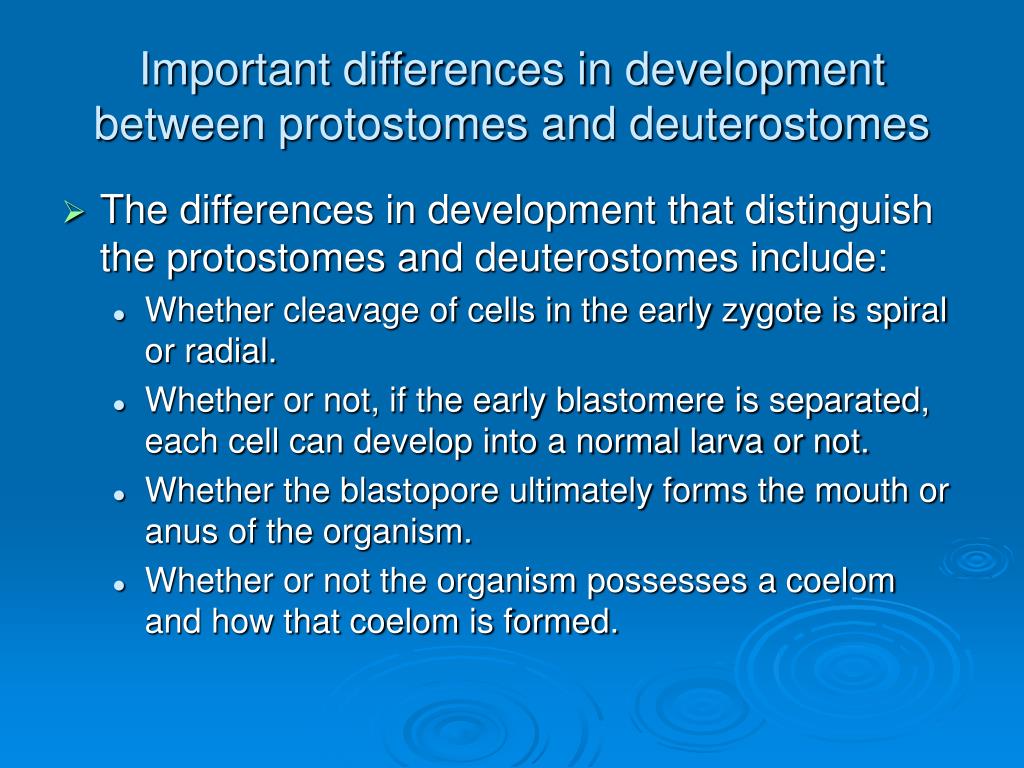

In chordates, for example, besides a dorsal hollow nerve cord and ventral heart, there evolved a dorsal notochord, ventrolateral gill slits, a ventral endostyle in the pharynx, and a dorsal postanal tail. After protostomes and deuterostomes diverged, members of each group would have added organs along this axis.

Thus, in the amended inversion hypothesis, the last common ancestor already had a complex differentiated dorsoventral axis. In the chordate line, the mouth eventually formed on the new ventral side and vanished from the old location. In chordates, axial muscle blocks were dorsolateral and visceral mesoderm was ventrolateral whereas protostomes had the opposite arrangement. The nerve cord was now dorsal, the heart ventral, and the blood flowed anteriorly in ventral vessels (Fig.

This orientation was retained by evolving members of the 25–30 protostome phyla (such as annelids and arthropods) whereas, within the deuterostomes (chordates, hemichordates, and echinoderms), an ancestor of chordates inverted its body, sideways over, but retained the same relative organ placements. After acceptance of Darwin's descent with modification, Dohrn ( 1) proposed in 1875 that the last common ancestor of these groups was an annelid worm-like animal with a ventral nerve cord, a dorsal heart, and a circulatory system with blood flowing anteriorly in dorsal vessels. Hilaire suggested that arthropods have the inverse dorsoventral organization of chordates.


 0 kommentar(er)
0 kommentar(er)
